Predicting the stellar mass of galaxies
based on their morphology
The total mass of all stars in a galaxy is an important property
To first order, it scales with the total light that we observe, so the interesting property is mass-to-light
Traditionally, astronomers combine multiple bands into colours in order to estimate the mass-to-light
Galaxies can be roughly divided into two large classes
This is based off the Hubble tuning fork
and it is definitely oversimplified...
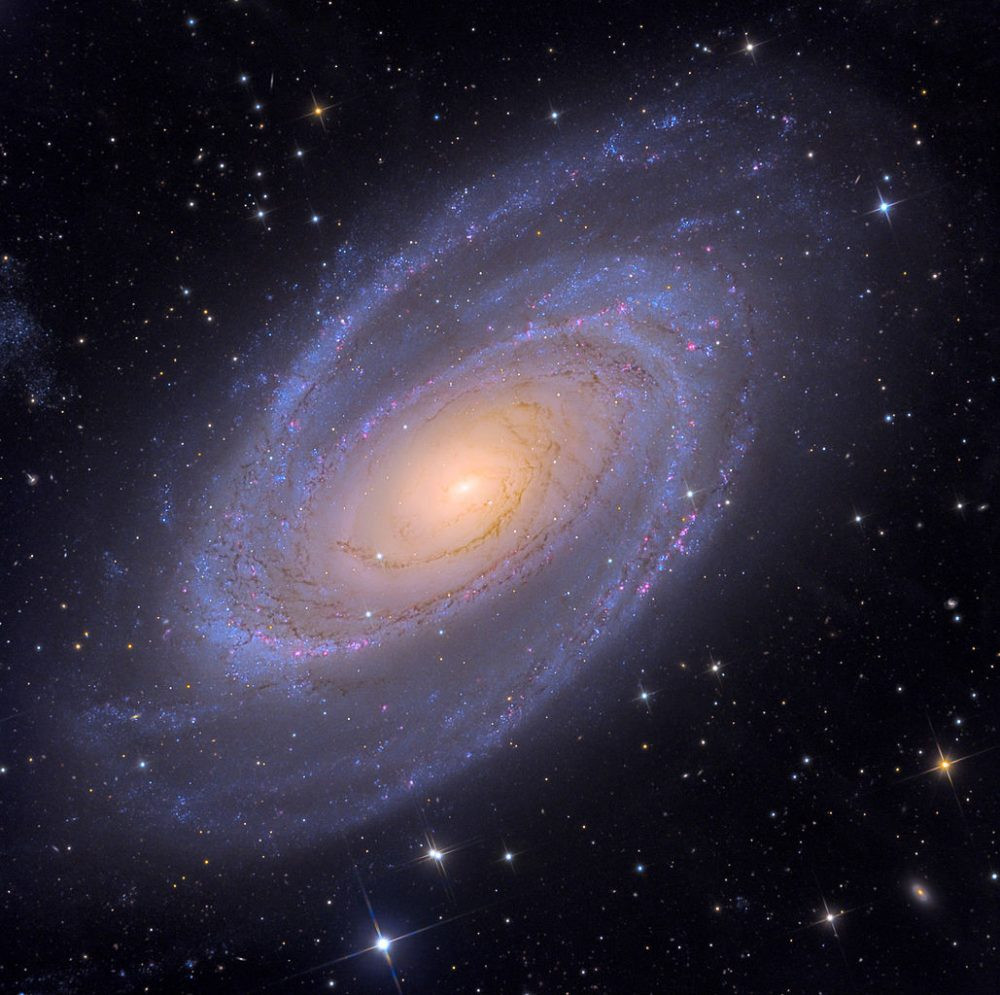
Spiral galaxies have active star formation, and are hence blue (young stars are more energetic)
Since young stars are very luminous, they have a low mass-to-light
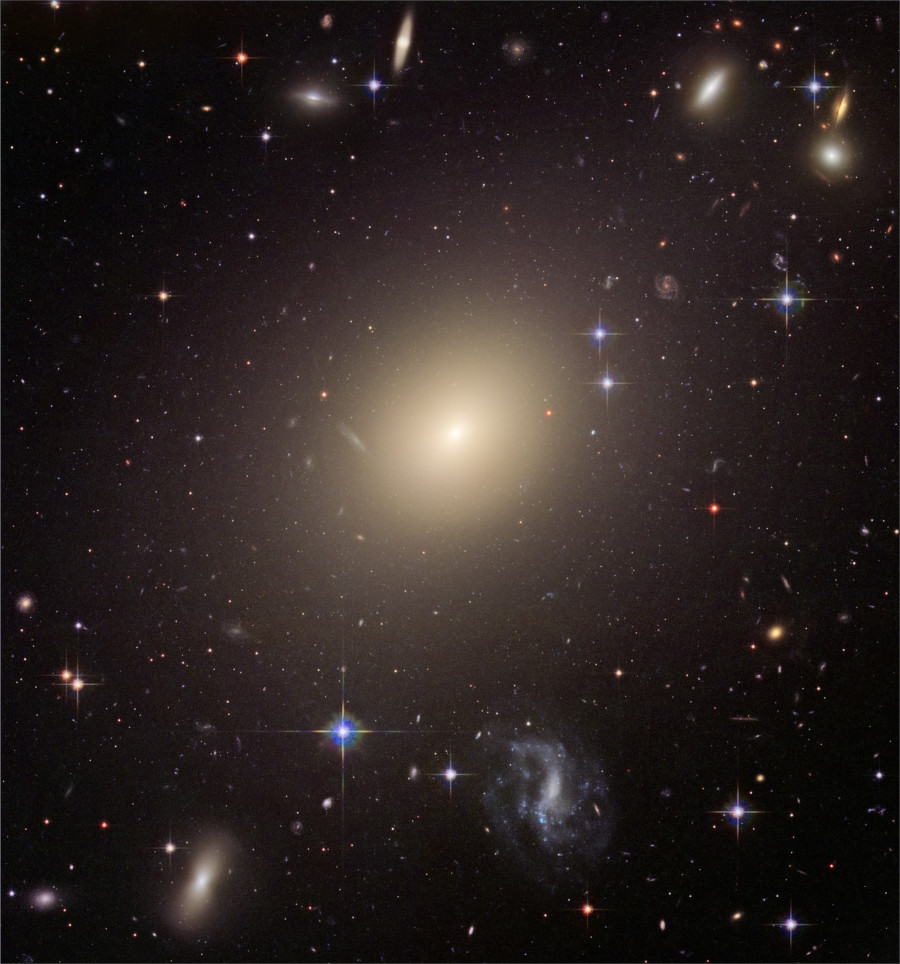
Elliptical galaxies are often called "red-and-dead", due to their low star formation
These objects have a high mass-to-light
In this work, we predict the stellar mass-to-light based on a galaxy's morphology (e.g. disk and spiral structure), instead of using its colour.
We use a convolutional neural network to detect the morphology features, by training on galaxy zoo
A gradient boosting machine is used to combine all features into a final prediction.
We find that this leads to a useful single band stellar mass prediction
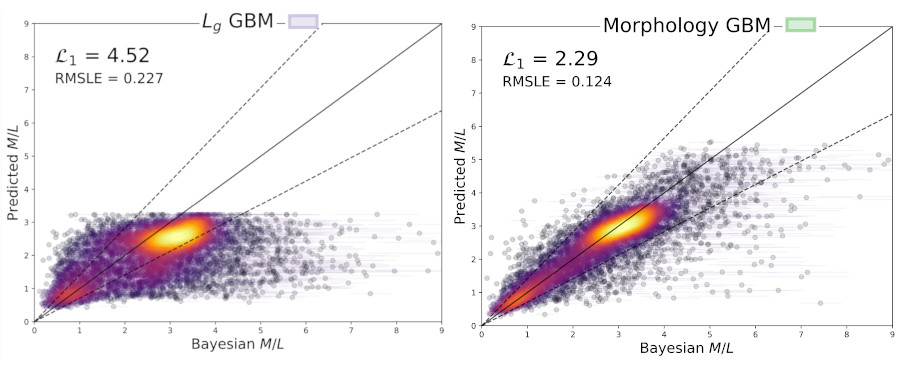
Predicted (g-band only) vs true mass-to-light (M/L); bottom is our method.
However, when multiple bands are observed, the benefit of including morphology is only marginal
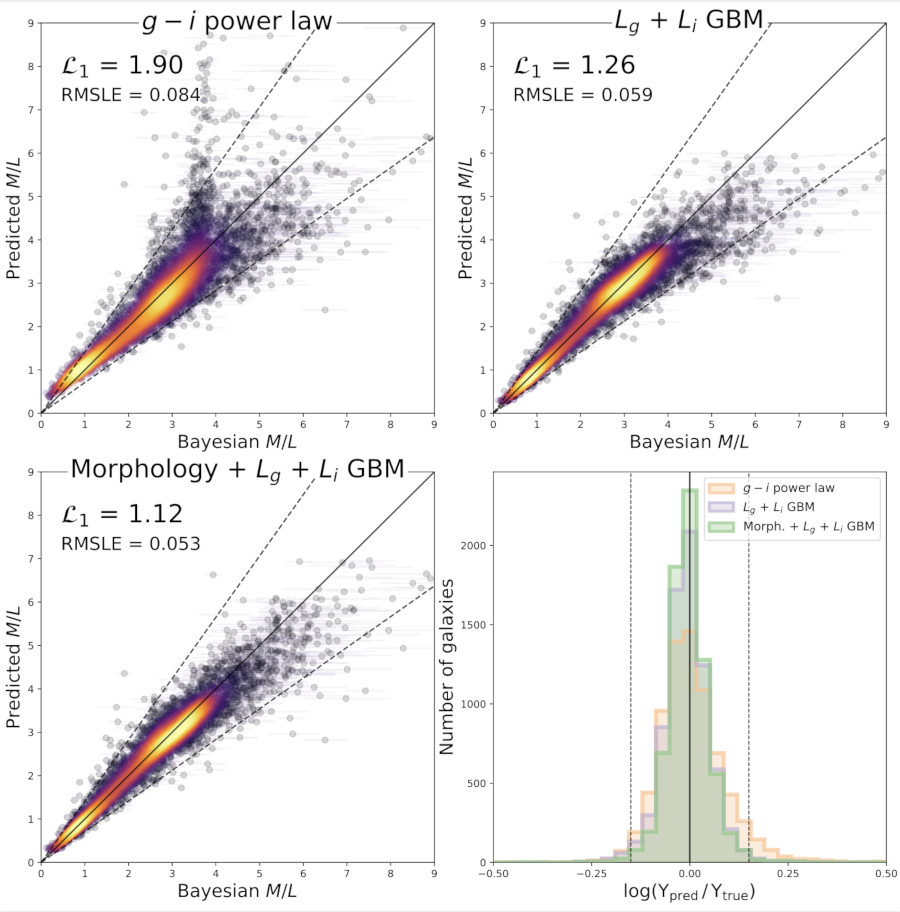
Predicted (gi-band) vs true M/L; bottom left is our method.
We also investigated how our predictor works, by looking at how M/L relates to the features
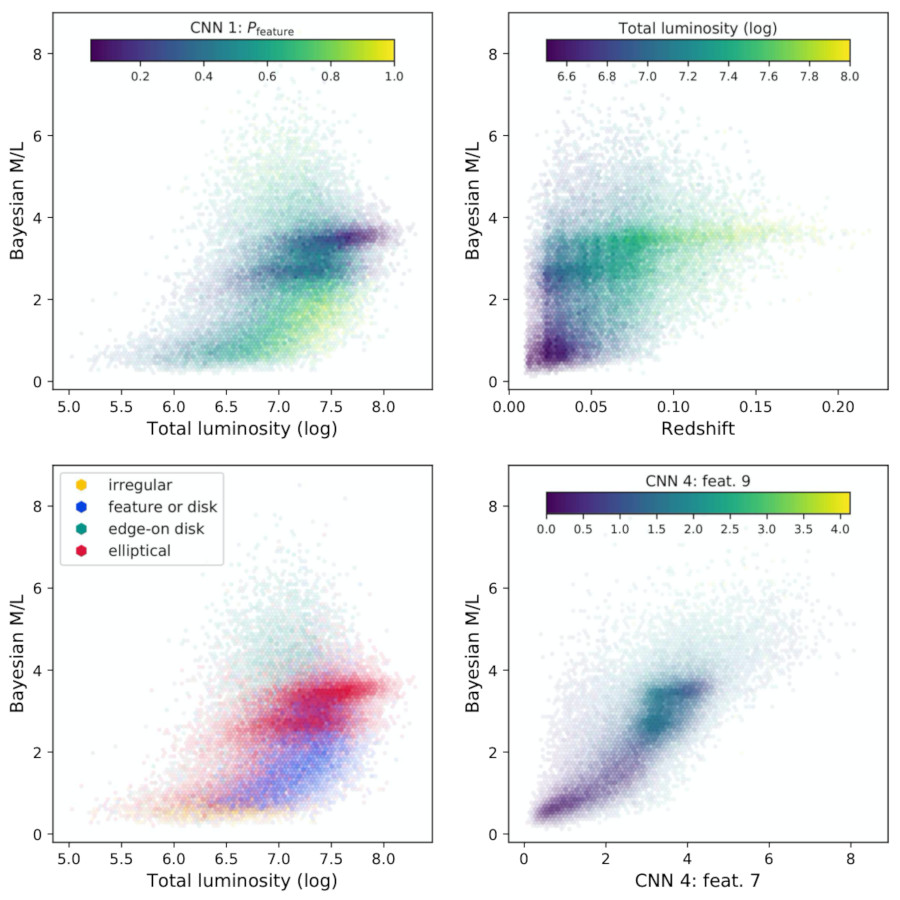
M/L on vertical axis, and one of the used features on the horizontal axis.